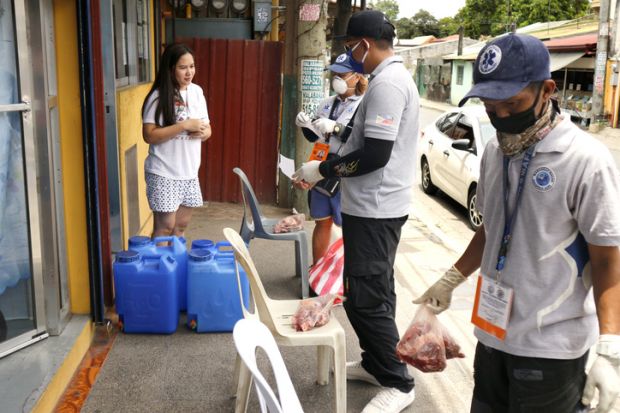Far from sounding the death knell for branch campuses, Covid-19 has underlined their value, Times Higher Education’s World Academic Summit has heard.
New York University (NYU) president Andrew Hamilton said that his network of “portal” campuses had emerged as a vital “support structure” after the crisis struck last year. The campuses – initially a source of stress, as the university evacuated people from hotspots such as China and Italy – had allowed stranded international students to “connect with a piece of NYU”, when Covid’s epicentre shifted to New York.
At the height of the pandemic, almost 3,000 students had been able to access in-person classes and support services at NYU Shanghai. Hundreds more had made similar use of NYU’s six European sites. “This was not the intended use of the global network…but it became invaluable in allowing students to be supported in their local environment [and] to continue their academic progress,” he said.
Computer vision expert Vijayakumar Bhagavatula said it had taken just two days for Rwanda-based Carnegie Mellon University (CMU) Africa, where he is director, to shift online after the pandemic struck. “We didn’t miss a beat,” he told the summit. “All our students graduated on time.”
But while Covid had been a wake-up call about making better use of educational technology, it had not rendered the branch campus model “irrelevant”. Professor Bhagavatula said that in-person interaction remained vital – particularly in a place like CMU Africa, where having staff on the ground was key to the mission.
“Africa is home to the youngest populations in the world,” he said. “This is where the next generation of technology leaders have to be trained. We could have taken the model where people [go] to the main campus [in Pittsburgh], get trained and come back. But being on the ground exposes our faculty to the local needs, challenges and special circumstances. Students also get trained to think like that.”
The Korea Advanced Institute of Science and Technology (KAIST), which has a similar mission in nearby Kenya, is pursuing an alternative type of foreign branch campus. KAIST, founded on a $6 million (£4 million) US international development loan in the 1970s, is now helping to establish the Kenya Advanced Institute of Science and Technology near Nairobi.
Its goal is to drive Kenya’s high-tech economic transformation, but not as a “satellite” of the South Korean institution. Rather, “a virtual campus” will “help mitigate the resource disparities and quality gaps between the two institutions”.
The project mimics KAIST’s adoption of what its president, Kwang Hyung Lee, calls the “metaverse”. During the pandemic, KAIST has used technologies such as augmented reality, image recognition and eye-tracking to help overcome the limitations of pre-recorded and Zoom classes.
Kenya-AIST will replicate this approach in an immersive setting, with students living on campus but able to take classes anywhere. “What we are witnessing today is the digital big bang – the unprecedented demand for non-contact services,” Professor Lee told the summit. “The Covid-19 pandemic is driving…innovation everywhere, including the education sector. Kenya-AIST will become a global model of a virtual campus.”
But fellow panellist Sabine Kunst ruled out the establishment of a branch campus, virtual or otherwise. “This is where we are, and where we are staying,” said Professor Kunst, president of the Humboldt University of Berlin.
“We have decided to preserve our strong local identity, and to invest our resources to build the strongest institution in this one place.”
Professor Kunst said that Humboldt was “highly international where we are”, with 21 per cent of its faculty and 40 per cent of its first-year students coming from elsewhere, while its domestic students were the “most mobile” under Europe’s Erasmus+ programme. Branch campuses were incompatible with Germany’s tradition of fee-free study, she added. “To us, the world is not a market that we want to reach out to for financial reasons,” she said.
“We involve foreign students because it is our mandate to get in touch with the world, and to diversify the experience of our domestic students. Our international model is to have an international campus in Berlin.”






